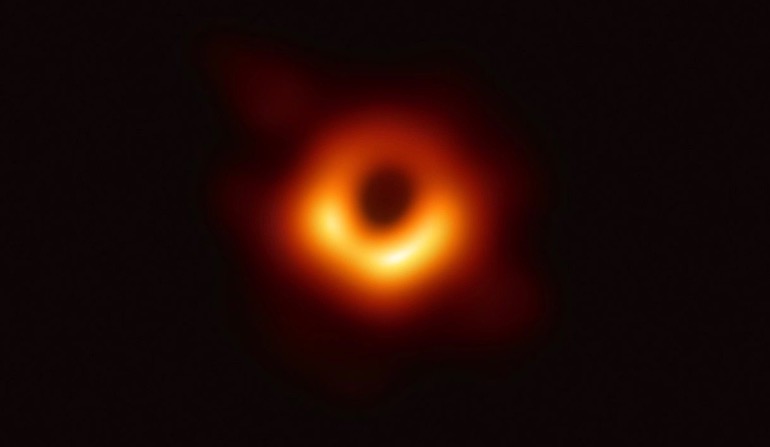 Physics, Earth & Space
Physics, Earth & Space
First Ever Black Hole Image Points to Cosmology’s Big Message


Discovery Institute astronomer Guillermo Gonzalez identifies two important points about the Event Horizon Telescope’s (EHT) exciting first ever image of a black hole. He writes today over at The Stream. First, CNN and other media outlets notwithstanding, the image from galaxy M87 is not really a photo of a black hole. You can’t take a photo of a black hole:
Isn’t it impossible to snap a picture of a black hole? A black hole is, well, black! Indeed, a black hole is defined as an object from which not even light can escape. The image that the EHT team produced is not actually a picture of a black hole, even though it does appear to have a “black hole” at the center of a bright disk. What it does show is a kind of shadow or silhouette produced by the black hole as well as material swirling around it.
Strange things happen in the vicinity of a black hole. A black hole does not actually have a surface, but a boundary astronomers call the “event horizon.” The radius of the event horizon is called the Schwarzschild radius. This is what is meant when an astronomer speaks about the size of a black hole. If you drop a flashlight toward a black hole and it slips within the event horizon, no one will ever again see the light from the flashlight.
We don’t actually see the event horizon in the picture. The paths of light rays get severely warped near the black hole. Rays of light coming at us from behind the black hole, just outside the Schwarzschild radius, go into the black hole. For this reason, a picture of a black hole seen against a bright background will look larger than one might expect given its mass (and therefore the Schwarzschild radius). The “shadow” radius of the dark hole in the picture is predicted to be 2.6 times the Schwarzschild radius.
Much more profoundly, Dr. Gonzalez comments on the implications of the image for the great meaning at the heart of today’s cosmology:
The EHT images of the vicinity of the event horizon of the black hole in M87 provide new strong gravity regime tests of general relativity. And, the new data do indeed confirm the predictions of general relativity. This follows in the heels of the impressive first direct detection of gravity waves in 2015, made a century after Einstein predicted their existence. General relativity forms the foundation of modern cosmology, and, in particular, the Big Bang theory. The Big Bang strongly implies a beginning to the material universe and an immaterial cause.
An “immaterial cause” behind the origin of the universe is the Big Bang’s big message. I bet you didn’t encounter that startling point in any of the rest of the excited news coverage of the EHT’s impressive achievement. See also, “Metaxas: A ‘Media Blackout’ on the ‘Miracle of the Universe.’”
Photo credit: Event Horizon Telescope [CC BY 4.0], via Wikimedia Commons.
